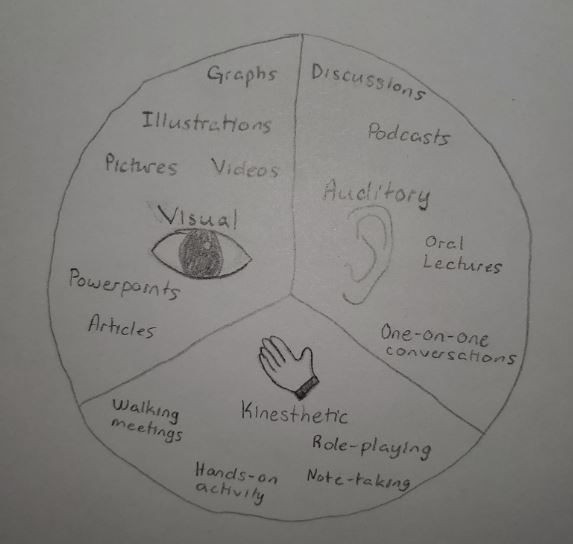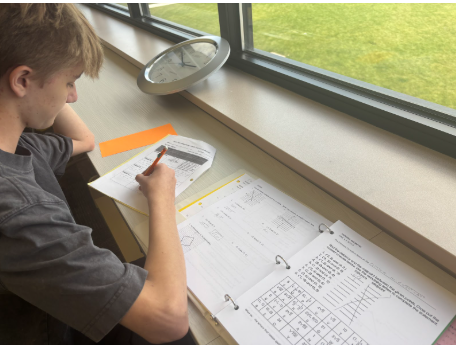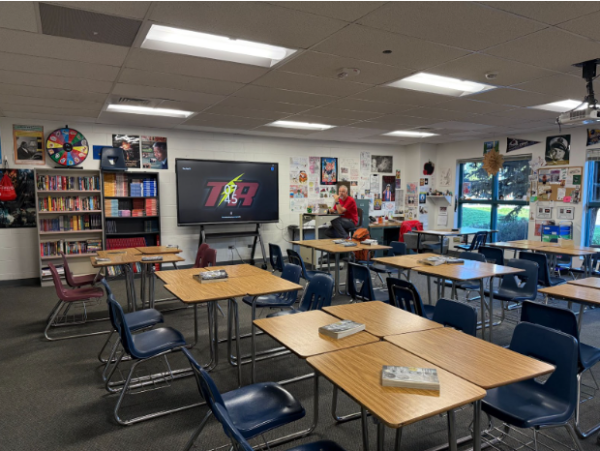How Learning Style Affects Studying
Studying is a forced habit for highschoolers. Only the most patient of students can go through hours of studying without getting sidetracked.
Most would rather repeat the process of vaguely going over material only when necessary instead of trying to form a less exhausting study plan. It’s simply too hard for some people to understand the value of putting time and effort into schoolwork rather than enjoyable extracurriculars.
“[My study habits] are not the best,” said freshman softball player Maya Sprague. “I get pretty busy with sports and such, and then I end up forgetting. Or I just don’t have the energy to.”
Or perhaps an individual excels at and enjoys studying a certain class, but they struggle with and dislike a different one.
“Studying for math or science is much easier for me since it’s mostly remembering key information and applying that to different situations,” said freshman Austin Zhang. “While for English and social studies, there’s more stuff to it. It’s not one formula applied to multiple situations.”
Unfortunately, it can be difficult to concentrate even in class. It is uncommon for teachers to take into account that not all students learn the exact same way. As a result, students find themselves with a lack of drive for even the most important of exams, despite obvious negative repercussions.
“I [believe] most teachers don’t really think about [different learning styles],” said Sprague. “I definitely think it could help [for teachers to consider]. If they made different resources for everyone, it could be better.”
Zhang had similar thoughts.
“Different people learn differently,” he said. “So some people are going to learn way easier and others are going to struggle a lot.”
The hard truth is that, unless you are on an Albert Einstein level of genius, it can be pretty hard to keep good grades without studying outside of class.
“It’s important to study so you can get better scores and know the material better,” said Zhang. “Most subjects build upon material covered earlier, so it’s important to get down the material before new material comes.”
So how do we overcome our feelings of dread when we have to study? It all comes down to the type of learner we are: visual, auditory, or kinesthetic.
These learners absorb information by reading or observing pictures. They remember by sight, and they can picture data in their head.
Generally speaking, they are neat and tidy. They may struggle with oral directions or be easily distracted by sound.
In the classroom:
- Sit toward the front of the class or closer to the board.
- Visualize what is being told or read to you.
- Write down in your notes key words and concepts and try color coding them.
At home:
- Use flashcards to learn and/or memorize key terms.
- Eliminate auditory distractions from your workplace.
- Try to sketch major concepts to help with visualization.
These learners take in material through listening and hearing. They remember information through sound, and oral instructions tend to be easier to follow.
Usually, they become quite talkative when bored. People may mistake their processing of information for a lack of attention.
In the classroom:
- Record lectures (with permission) to go over at home later.
- Read stories or prompts out loud.
- Use mnemonics and rhymes to help with memorization.
At home:
- Study material by reading it out loud.
- Find a study buddy to verbally cover information.
- Record yourself reading over key concepts and definitions.
These learners grasp knowledge through the use of their hands. They remember through physical movement, often speak with gestures, and are the literal representation of a hands-on learner.
Typically, they enjoy taking things apart and then reconstructing them. They like to tinker and move around, but they may struggle with oral or written directions.
In the classroom:
- Chew gum or use a fidget when doing classwork or listening to a lecture.
- Make sure to take frequent but not excessive breaks if allowed.
- Take advantage of interactive activities such as art projects.
At home:
- Use a computer to help learn through touch.
- Take frequent breaks during studying. If you tend to stretch on your breaks, set a timer for yourself.
- Arrange flashcards into groups to express connections within the material.
Because no single person can fit easily into only one category, try mixing up these points of advice into a personal study plan. Not sure which category you fall in? Try this learning style assessment.








![A Vest Won’t Protect You [OPINION]](https://ghschronicle.com/wp-content/uploads/2025/09/KoltonZuckerVestPosterOffWhite-450x600.png)



